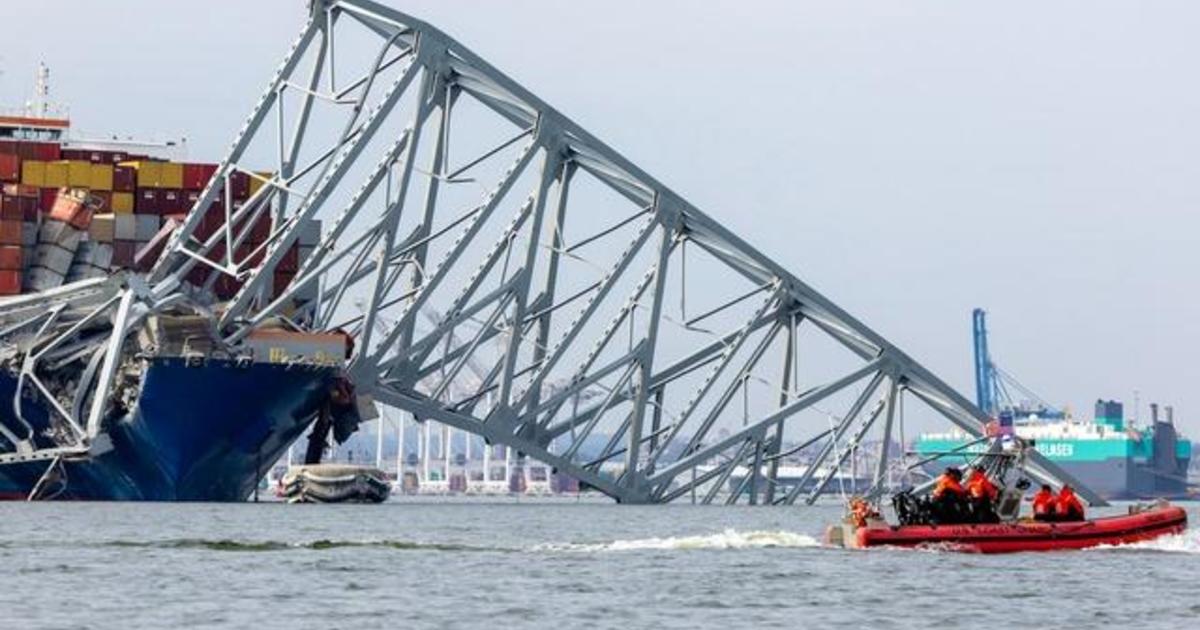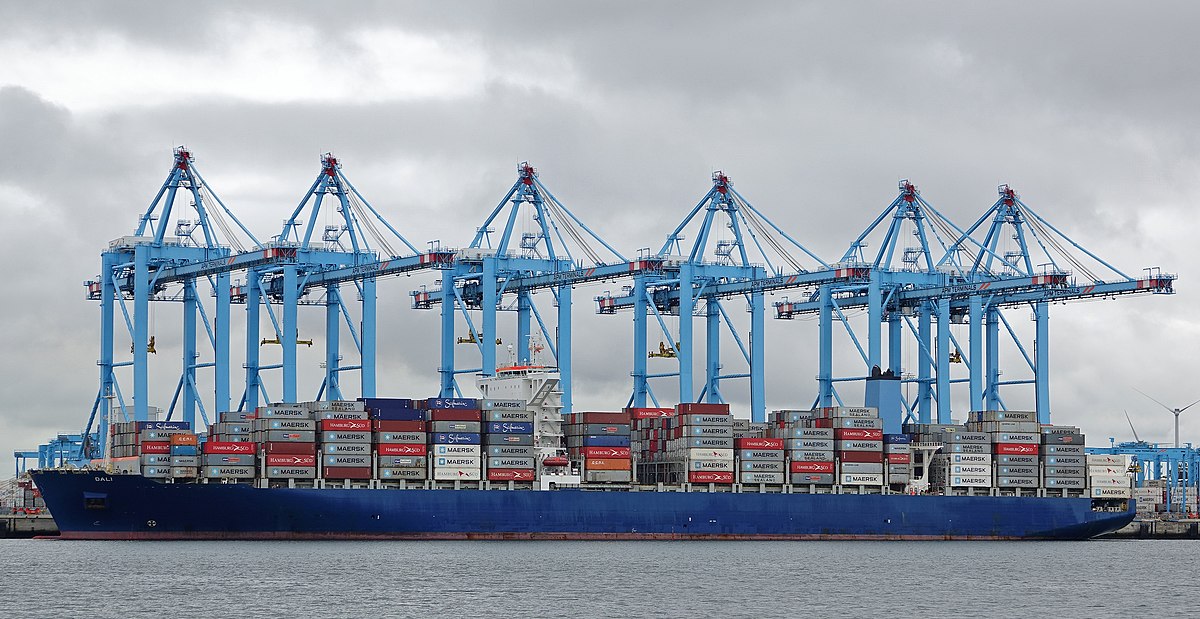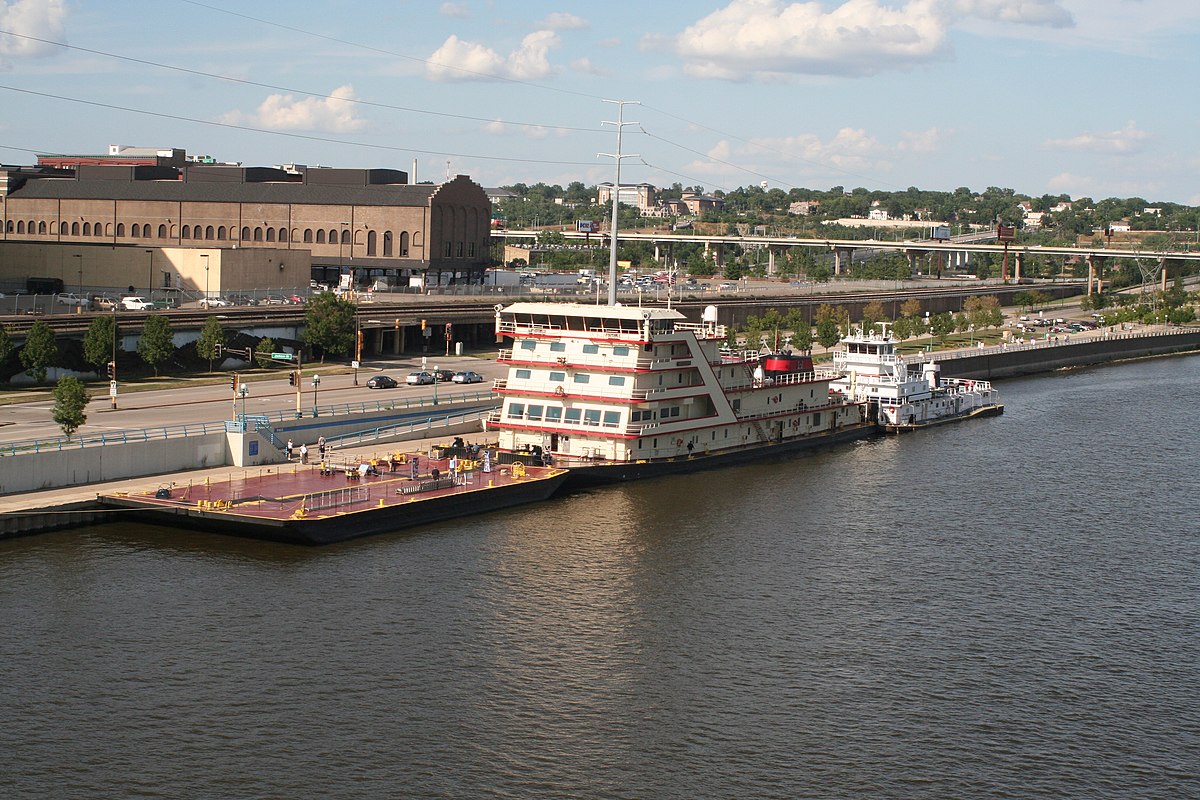One of the cruise channels I watch uploaded a video this morning, mentioning all the ships that had to be diverted to Norfolk, and the cruise lines were paying for transportation and hotels for passengers to get back to Baltimore, if that's where they needed to go to get home. And then having to reroute all these ships for future sailings, again dealing with passengers who would not be able to travel to Norfolk for whatever reason and would likely cancel... the channel host mentioned tens of millions in lost revenue. Not that they're not also thinking of the lives lost and the local impact of this, but of course they're businesses and have to think of the financial hit.Paying for the Baltimore bridge collapse will be a complicated, years long mess
The massive cargo ship crash into Baltimore’s Francis Scott Key Bridge will likely lead to billions of dollars in liability claims. Marine insurance companies will be on the hook for much of the costs. With various owners and companies involved – and with some maritime laws predating even the Titanic sinking – untangling the web, figuring out who owes what, and addressing the damages from both lives lost and to physical structures will be complex. “This claim has the potential to be north of a billion dollars,” said John Miklus, the president of the American Institute of Marine Underwriters. “Litigation will run years.”
Much more here:
You are using an out of date browser. It may not display this or other websites correctly.
You should upgrade or use an alternative browser.
You should upgrade or use an alternative browser.
Cargo ship destroys interstate bridge in Baltimore
- Thread starter Kaitzilla
- Start date

Families of victims in Baltimore bridge collapse speak out: "Tremendous agony"
Two bodies were recovered Wednesday as four more are still missing and presumed dead, leaving the families of victims in the Francis Scott Key Bridge collapse in Baltimore in mourning.
Looks like all the bridge repair crew who were killed were immigrants from Central America.
Bestbank Tiger
Deity
I am surprised this does not happen more often with the number of massive ships like that passing under bridges every day around the workld and knowing how often they have all kind of failures since most sail under not very exigent flags, not only on taxes but also maintenance/safety wise. There is not way any bridge can withstand a collision with a ship of such size.
Local news said the Mississippi River bridges have bumpers.
Not sure if those were ever needed. You presumably wouldn't hear about it if a ship with a dead engine got deflected.
Local news said the Mississippi River bridges have bumpers.
Not sure if those were ever needed. You presumably wouldn't hear about it if a ship with a dead engine got deflected.
When the Mississippi is in flood, anything could hit those bridges. And it won't be anything that is under the control of anyone. So it's not optional. The odds of the Baltimore bridge being hit was really far lower. Because nearly anything passing beneath it will be under power and control. Or too small to matter. 10s of 1000s of ships have passed beneath that bridge. This is the first time in over 50 years one lost control at a critical time.
Lexicus
Deity
When the Mississippi is in flood, anything could hit those bridges. And it won't be anything that is under the control of anyone. So it's not optional. The odds of the Baltimore bridge being hit was really far lower. Because nearly anything passing beneath it will be under power and control. Or too small to matter. 10s of 1000s of ships have passed beneath that bridge. This is the first time in over 50 years one lost control at a critical time.
When all it takes is one, smart money is invested in the bumpers.
Bamspeedy
CheeseBob
Would bumpers have done anything for a ship that size, though? River barges are alot smaller and slower than cargo ships.

 en.wikipedia.org
en.wikipedia.org

 en.wikipedia.org
en.wikipedia.org

MV Dali - Wikipedia

MV Mississippi - Wikipedia
Bestbank Tiger
Deity
Dunno.
River barges can do a lot of damage. See the Bright Field incident in 1996. Destroyed the Riverwalk mall.
River barges can do a lot of damage. See the Bright Field incident in 1996. Destroyed the Riverwalk mall.
Joij21
🔥Hail Satan!🔥
My destruction of the world economy is all going to plan! Mwahahaha! 
Soon the big buyout shall happen and you will all be my slaves!

Soon the big buyout shall happen and you will all be my slaves!
Bamspeedy
CheeseBob
That was a cargo ship. New Orleans.Dunno.
River barges can do a lot of damage. See the Bright Field incident in 1996. Destroyed the Riverwalk mall.
MV Bright Field - Wikipedia
Lexicus
Deity
Would bumpers have done anything for a ship that size, though? River barges are alot smaller and slower than cargo ships.

MV Dali - Wikipedia
en.wikipedia.org

MV Mississippi - Wikipedia
en.wikipedia.org
I don't know in detail, perhaps "bumpers" is not the exact correct word, but it is my understanding that you can engineer obstacles that prevent even today's largest ships from striking the bridge with enough force to cause catastrophic failure. When one collision is all it takes, this is the wise thing to do. I don't think there's any serious argument that the cost of investing in whatever you call them is greater than the economic loss from the bridge being taken out (let alone the lives that were lost, whom I know were immigrant workers "poisoning the blood of our country" but still).
EnglishEdward
Deity
Been reading wiki:
 en.wikipedia.org
en.wikipedia.org
some fascinating terminology.
Bridge protection systems - Wikipedia
some fascinating terminology.
New deep-water channel allows first ship to pass
BY LEA SKENE ASSOCIATED PRESS
BALTIMORE — The first cargo ship passed through a newly opened deep-water channel in Baltimore on Thursday after being stuck in the harbor since the Francis Scott Key Bridge collapsed four weeks ago, halting most maritime traffic through the city’s port. The Balsa 94, a bulk carrier sailing under a Panama flag, passed through the new 35-foot channel headed for Saint John, Canada. Two more commercial ships followed later Thursday. Their long-awaited voyages marked an important step in the ongoing cleanup and recovery effort as crews have been working around the clock to clear thousands of tons of mangled steel and concrete from the entrance to Baltimore’s harbor.
Five vessels that have been stranded for weeks are expected to finally leave Baltimore through the new, temporary channel. Other ships are scheduled to enter the port, which normally processes more cars and farm equipment than any other in the country.
Thousands of longshoremen, truckers and small business owners have seen their jobs impacted by the collapse, prompting local and state officials to prioritize reopening the port and restoring its traffic to normal capacity in hopes of easing the economic ripple effects of the collapse. Officials have also established various assistance programs for unemployed workers and others impacted by the closure. On Thursday morning, the Balsa 94 moved through the channel guided by two tug boats, one in front and one behind. It glided slowly past the fallen bridge and grounded Dali, the massive container ship that caused the collapse when it slammed into one of the bridge’s support columns.
Pieces of the steel span are still blocking other parts of the port’s main channel, which has a controlling depth of 50 feet, enough to accommodate some of the largest cargo and cruise ships on the water.
The Dali lost power and veered off course shortly after leaving the Port of Baltimore bound for Sri Lanka last month. Six members of a roadwork crew — all immigrants from Mexico, Guatemala, El Salvador and Honduras — plunged to their deaths in the collapse. Four bodies have been recovered .


A cargo vessel moves through a newly opened deep-water channel in Baltimore on Thursday after being stuck in the harbor since the Francis Scott Key Bridge collapsed four weeks ago. MATT ROURKE/ASSOCIATED PRESS
The new channel will remain open until Monday or Tuesday and then close again until roughly May 10. During the closure, crews will work to remove steel spans from the deck of the Dali and refloat the ship, which will then be guided back into the port, officials said earlier this week.
The port’s main channel is set to reopen next month after the Dali has been removed from the collapse site.
BY LEA SKENE ASSOCIATED PRESS
BALTIMORE — The first cargo ship passed through a newly opened deep-water channel in Baltimore on Thursday after being stuck in the harbor since the Francis Scott Key Bridge collapsed four weeks ago, halting most maritime traffic through the city’s port. The Balsa 94, a bulk carrier sailing under a Panama flag, passed through the new 35-foot channel headed for Saint John, Canada. Two more commercial ships followed later Thursday. Their long-awaited voyages marked an important step in the ongoing cleanup and recovery effort as crews have been working around the clock to clear thousands of tons of mangled steel and concrete from the entrance to Baltimore’s harbor.
Five vessels that have been stranded for weeks are expected to finally leave Baltimore through the new, temporary channel. Other ships are scheduled to enter the port, which normally processes more cars and farm equipment than any other in the country.
Thousands of longshoremen, truckers and small business owners have seen their jobs impacted by the collapse, prompting local and state officials to prioritize reopening the port and restoring its traffic to normal capacity in hopes of easing the economic ripple effects of the collapse. Officials have also established various assistance programs for unemployed workers and others impacted by the closure. On Thursday morning, the Balsa 94 moved through the channel guided by two tug boats, one in front and one behind. It glided slowly past the fallen bridge and grounded Dali, the massive container ship that caused the collapse when it slammed into one of the bridge’s support columns.
Pieces of the steel span are still blocking other parts of the port’s main channel, which has a controlling depth of 50 feet, enough to accommodate some of the largest cargo and cruise ships on the water.
The Dali lost power and veered off course shortly after leaving the Port of Baltimore bound for Sri Lanka last month. Six members of a roadwork crew — all immigrants from Mexico, Guatemala, El Salvador and Honduras — plunged to their deaths in the collapse. Four bodies have been recovered .

A cargo vessel moves through a newly opened deep-water channel in Baltimore on Thursday after being stuck in the harbor since the Francis Scott Key Bridge collapsed four weeks ago. MATT ROURKE/ASSOCIATED PRESS
The new channel will remain open until Monday or Tuesday and then close again until roughly May 10. During the closure, crews will work to remove steel spans from the deck of the Dali and refloat the ship, which will then be guided back into the port, officials said earlier this week.
The port’s main channel is set to reopen next month after the Dali has been removed from the collapse site.
That non-functional magnifying glass is throwing me off...
Interesting update though. Kind of impressive that they were able to open that channel, even temporarily, within a month.
It is important for the port of Baltimore and clearing is quicker than rebuilding. I expect the new bridge to take years.That non-functional magnifying glass is throwing me off...
Interesting update though. Kind of impressive that they were able to open that channel, even temporarily, within a month.
Bestbank Tiger
Deity
Once they clear the channel they can start a ferry.It is important for the port of Baltimore and clearing is quicker than rebuilding. I expect the new bridge to take years.
Similar threads
- Replies
- 166
- Views
- 13K
- Replies
- 61
- Views
- 8K
- Replies
- 2K
- Views
- 152K
